DMiller
Senior Member
Those conditions are best waitied out to Dry Season!!
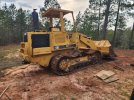
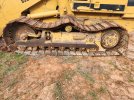
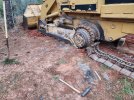
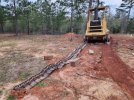

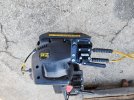


Bin there, done that.... meaning looking for an inexpensive way of drilling water wells.
Back in about 1985, freshly married and on a wilderness acreage with a wife and a new son and another on the way, we needed water. The father-in-law was on an adjacent parcel and had drilled wells in the '50's. He swore up and down there was no well water on the dry mountain side we were both on. He had previously got water rights on a creek down in the bottom of the little valley we were in, which was about 1500 feet from his land. And vertically up by about 500 feet. He rented an excavator and dug in a PVC water line to his place, casting a concrete storage tank at his house. The major issues around that method of getting water was rights of way and permission to cross a road by the creek and no permission to dig an infiltration system into the creek. He eventually made everything happen and had water.
I did not want to go this route, as dealing with the government was getting tougher as time went on. I wanted a well on my 8 acres without having to get permission from anybody. So I wanted to be able to drill wells cheaply if he was truly right that the country was "dry". So I was wanting a way to drill a few dry wells without breaking the bank. I told everyone that I was going to "ventilate the countryside until I found water". This was problematic because just hiring a well driller with a conventional air-rotary rig was expensive, and the cost had to be paid even if they didn't find water.
Being an engineer, I hit the books first to find out about drilling methods and what I could do myself. The modern rigs were immediately rejected--I didn't have the cash to buy anything that approached an air rotary. I soon found that the old ways of drilling worked just as well but took time: The cable tool drilling rig. It's an OLD technology that goes back at least a thousand years: the Chinese used the method a long time ago, with wooden tools and fiber ropes. Newer cable tool rigs were still pricey but I found a decent rig that someone had built themselves. It was mounted on an old single axle flat deck 3 ton. I got it for about $2500. It had a drill bar and a bunch of random drilling bits with it. Found an old US military instruction manual about drilling with a cable tool rig which helped me with how to actually do the drilling. Father in law helped the most, since he had actually operated a cable tool rig in the past.
So we started drilling, dumping 5 gallon pails of water down the hole to make the stuff we drilled into mud. When we had enough, we pulled the drill bar out of the hole and dropped down the mud bucket on the "sand line". It had a one way valve in the bottom of the bucket that allowed the mud to fill the bucket, and we pulled out the full bucket and dumped it. We would use the drill bar to hammer the casing further into the drilled hole and also used the drill hoist to pull up more casing pipe to weld to the casing that we were advancing into the ground.
Since the drill bar cutting bit fits inside the casing, it drills a hole a little smaller than the casing. The casing has a hardened "drive shoe" welded to the end of the pipe which scrapes the drilled hole as you drive it down the smaller hole made by the drill bar. This dirt has to be be beat up into mud with the drill bar and removed by the mud bucket. The only issue here is if you drill thru a solid boulder bigger than the drill bar and casing. In that case you clean out the hole and hang a stick of dynamite down the hole right in the center of the boulder you just drilled through and break it up. The hole can then be cleaned out and the casing be driven through the now shattered boulder. This happened once with my drilling. I had anticipated this and took a course to get a blasting license.
I will never forget the feeling when we realized, at about 200 feet down, we were pulling up MORE!! water in the drilled mud than we had dumped down the hole. By the way, Father in law said he had drilled a well to 600 feet with a cable tool rig back in his day, so they can drill a long way.
So we struck water on the first hole, on that "dry hillside" that Father in law swore there was no water. At a cost of a couple of grand for an old drill rig. We resold it for the same money that we paid for it.
So, my suggestion to you is to take a close look at an old cable tool drill rig...they are simple compared to anything you are looking at and can do the job to whatever depth you are considering.
Not as fast as an air rotary but not costly.
If you are interested in having a look, a quick search on the 'net for "cable tool drilling" or "Bucyrus-Erie 22W drilling rigs" would be a good start. They are dead simple and easy (and cheap) to keep running, especially if you want to do it yourself.
YMMV!
Jon
What would cause the mast to pop and snap down deep?Worked on over center rigs, hateful awaiting the slack to catch up on over run!!
Be really cautious if upper mast pops and snaps down deep, look for rust at the pivot head to fiberglass mast. Both indicate the epoxy joint connection is failing and is all that holds it together.
Can be Re-Glued but not cheap to pass inspection for safety.
